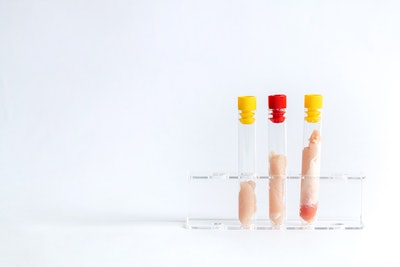
Technology originally developed for human therapeutic purposes could shorten the production cycle and reduce the cost of cultivated meat.
The high costs associated with cultivated meat production remain a big barrier to commercialization for lab-grown meat. The process involves the use of a growth medium to stimulate cell growth, which can cost up to $400 a liter. One kilogram of cultured meat can require up to 600 liters of growth medium, so costs can add up quickly.
“The reason you still don’t see cultivated meat as a product is that the industry is simply not ready for it yet. The product and the process is still being developed. The technology is still being developed,” said Guy N. Michrowski, CEO, ProFuse Technology
How it works
Research into muscle regenerations at the Weitzmann Institute of Science revealed that one type of stem cells, known as myoblasts, differentiates and fuses into fibers when exposed to a molecule that inhibits the enzyme ERK.
Another enzyme, CaMKUII, then acts to trigger further massive fusion and expansion
“They basically looked at understanding how muscles in our body regenerate themselves. Whenever we use our skeletal muscles, they get injured but the body can repair them. And the way the body repairs those muscles is by differentiating stem cells into muscle cells. And then using those muscles to create fusion, meaning getting those cells into the fiber of the muscle and repairing the muscle,” Michrowski explained.
“The breakthrough was understanding the decoding of the process of the biological pathway that regulates that process. And then the idea came up to use the same process for the production of cultivated meat since meat is mostly muscle.”
The technology accelerates muscle formation through the administration of a cocktail of small molecules that activates ERK. In poultry cells, the length of time between the differentiation and maturation stage is three days, down from seven.
“The demand for meat is going to grow so fast that the industry will not be able to support the demand,” he added. “Look at us as an opportunity. Cultivated meat is an opportunity for meat producers.”


















